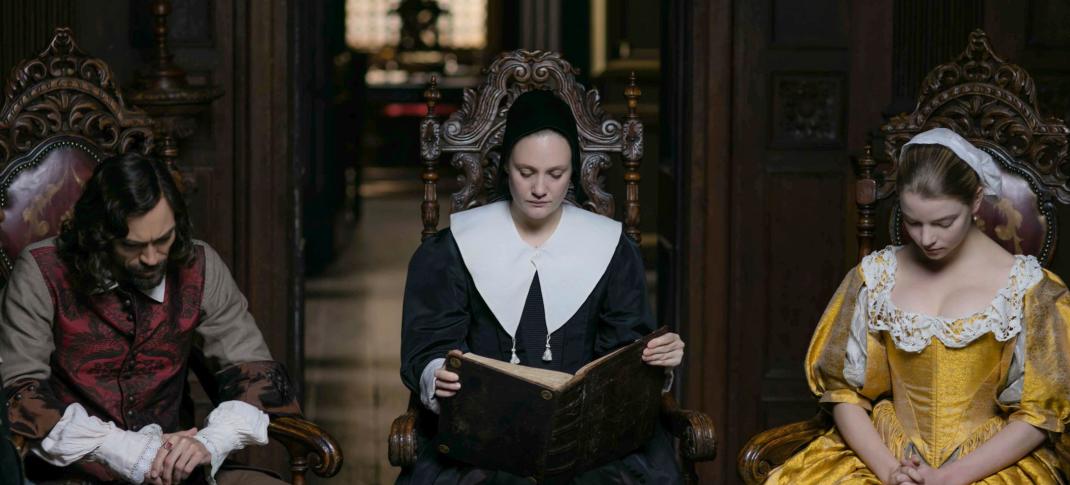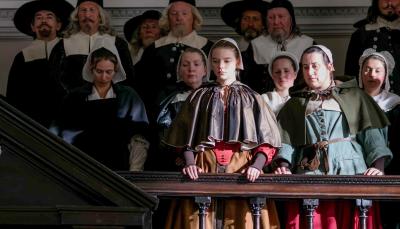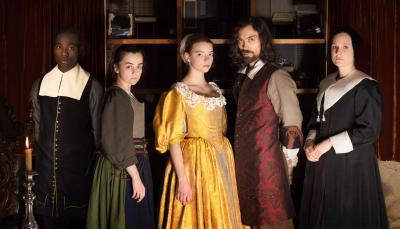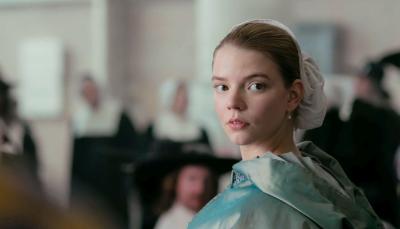'The Miniaturist' Recap, Part 1: Sickening of the Soul

“The Miniaturist” MASTERPIECE on PBS Sundays, September 9 - 23, 2018 at 9pm ET Shown from left to right: Alex Hassell as Johannes, Brandt, Romola Garai as Marin Brandt and Anya Taylor-Joy as Petronella Brandt (C) The Forge/Laurence Cendrowicz for BBC and MASTERPIECE
WARNING: Use of this copyright image is subject to the terms of use of BBC Pictures' Digital Picture Service (BBC Pictures) as s
In The Miniaturist's opening episode, Nella introduces us to 17th century Amsterdam.
Marin: We do no keep sugar in the house. The luxury of it sickens the soul.
The world has changed enormously in the last 100 years. Downton Abbey spent six seasons running through how the world changed drastically from 1912 to 1925. The advent of computers and the internet in the 1990s has given the world today as massive a shift from 2002 to 2015. With the world having altered in such a vast manner, the world of the 1600s is one so foreign as to be alien by today's standards.
This is both the premise and the problem of The Miniaturist. Set back in the puritanical age of Amsterdam, very little of this world would feel familiar to viewers of today. Marriages are arranged practically sight unseen. When Nella's mother asks if she can maybe love the husband to be that's buying her, Johannes Brandt, she asks what does that matter. She's right.

Unfortunately, the novel was written in 2014 and the series made last year. That means that though Nella pays lip service to the question of "what does it matter," the series assumes for those at home the answer is "very much so." So within the first hour, Nella's practicality has given way to a need to "love" her husband, a resentfulness of his relationship with his sister, and a very uncharacteristic for the time forthrightness.
And yet, the story is one that reminds us that Nella is but a child. Her wedding gift is one suited for an eight-year-old princess, a dollhouse cabinet replica of the house she has moved to. It's a child's toy, fit for a young teenage girl who is still practicing at decorating a home, not one who is married and in charge.
Marin: It couldn't stay in the hallway. It was taking up all the light.
But The Miniaturist is also a classic case of misdirection. From the get-go, audiences understand something is wrong in the house. Johannes has no interest in bedding his bride. His sister clings to him while making pious noises. The two of them fight like an old married couple. She complains Nella's room used to be her room, but she clearly runs the house and moved of her own volition. Nella will never be allowed to be anything more than wife-as-decor as long as Marin lives there, and she's not going anywhere.
The dollhouse, in a sense, is an admission of that. Marin won't let Nella run her house, so Johannes gives his bride a miniature one to play with, to decorate as she pleases. But the mystery artist who creates the pieces for inside her house knows the home's secrets. From the perfect scale model of the box where Johannes keeps his papers to help her find the key to his office to the dolls of Marin and Johannes arriving in an embrace, everything about it is spooky yet suggestive, and that's not counting the ghostly figure of a blonde woman Nella keeps seeing.

Audiences who are trained on shows like Game of Thrones will leap to the suggested conclusion about Johannes and Marin's relationship. Moreover, the first "twist" at the end of the hour seems to confirm it. Marin is a hypocrite. Her puritanical clothes are lined on the inside with fur, a decadent luxury. She has an entire walk-in closet filled with treasures of all sorts, from peacock feathers to strange bones to that all-important sugar no one admits to eating in public. She also has love letters tucked into a book, one of which Nella begins to read.
The implications are obvious. The love letter is from Johannes. Nella has already yelled that she had to "share" her husband with his sister, and now it seems she shares him in all the ways. Except then a second twist occurs when Nella goes to Johannes' office to confront him. Turns out Marin isn't her brother's object of affection. She's the wrong gender. And so is Nella. The marriage is a sham, for all the reasons sham marriages have occurred for centuries. Johannes is gay.
How will Nella handle this? Viewers will find out next week when The Miniaturist continues.




